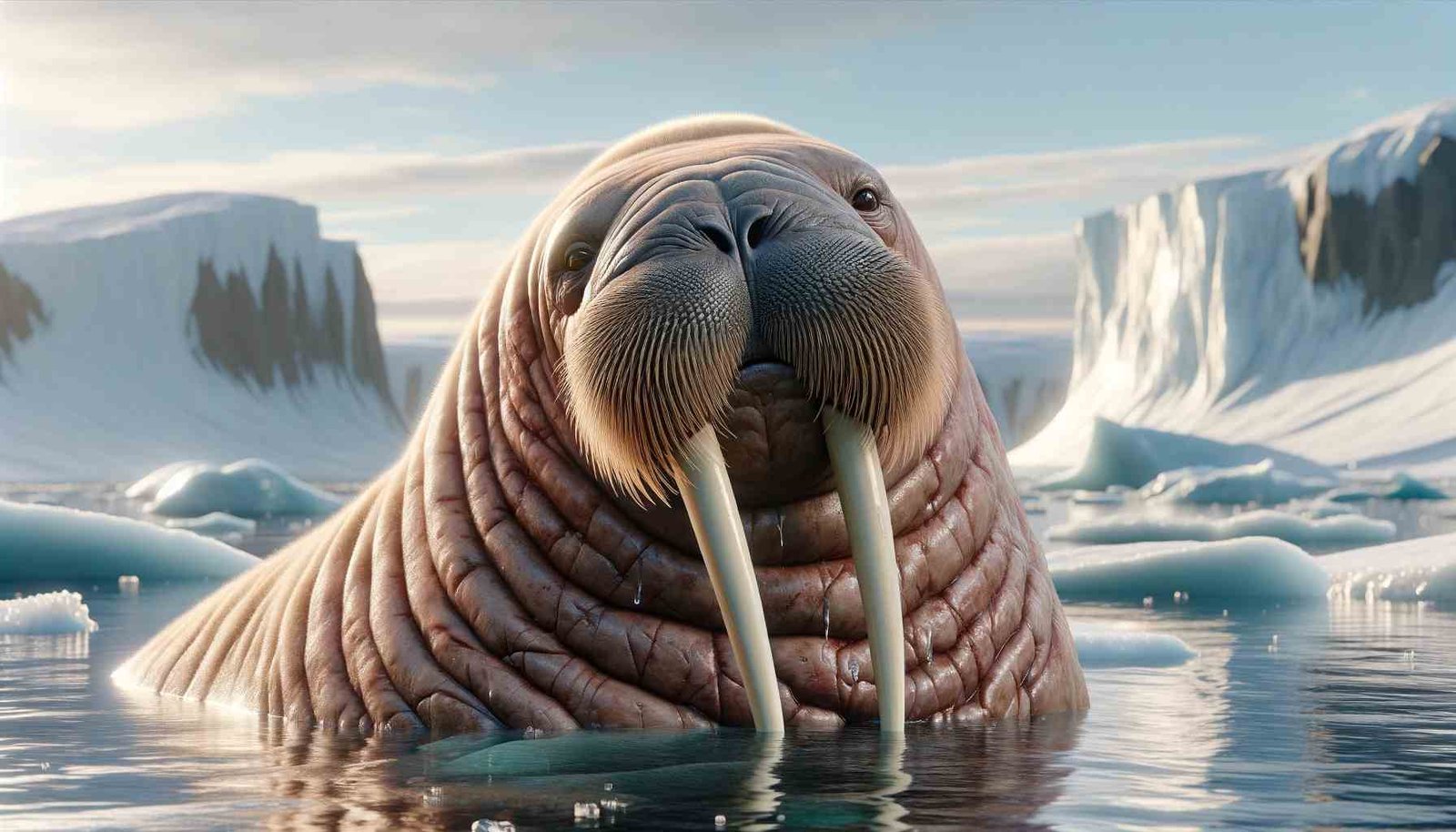Ever stumbled upon an animal name that starts with ‘W’ and thought, “What on earth could that be?” You’re not alone. The animal kingdom is brimming with surprises, especially when it comes to those starting with the letter ‘W’. Think about it: how often do you come across such names in your daily life?
As we explore these creatures together, you’ll find that the world of ‘W’ animals is not just about names, but about discovery, adaptation, and the sheer wonder of nature. Ready to uncover some of nature’s most intriguing secrets hidden behind a simple letter? Let’s go!
List Of Animals That Start With W
- Walrus
- Warthog
- Weasel
- Whale
- Whipray
- White Rhino
- Wallaby
- Wombat
- Woodpecker
- Worm
- Wolverine
- Water Buffalo
- Wildebeest
- Wolf
- Wrasse
- Waxwing
- Weevil
- Wallaroo
- Water Dragon
- Woodlouse
- Warbler
- Waterbuck
- Wood Frog
- Wahoo (fish)
- Walking Catfish
- Wall Gecko
- Water Strider
- Wax Moth
- Weaver Bird
- Whiptail Lizard
Animals That Start With W (Fun Facts & Species Details)
1. Walrus

Fun Fact: Walruses can slow their heart rate to withstand the cold Arctic water.
| Detail | Information |
| Scientific Name | Odobenus rosmarus |
| Origin | Arctic regions |
| Family | Odobenidae |
2. Warthog

Fun Fact: Warthogs have been known to allow banded mongooses to clean them of ticks.
| Detail | Information |
| Scientific Name | Phacochoerus africanus |
| Origin | Sub-Saharan Africa |
| Family | Suidae |
3. Weasel

Fun Fact: Weasels have a very high metabolism and need to eat about half their body weight daily.
| Detail | Information |
| Scientific Name | Mustela |
| Origin | Worldwide, except Australia, Antarctica, and neighboring islands |
| Family | Mustelidae |
4. Whale

Fun Fact: The blue whale’s heart is so large that a human can swim through its arteries.
| Detail | Information |
| Scientific Name | Cetacea |
| Origin | Worldwide oceans |
| Family | Varies by species |
5. Whipray

Fun Fact: Whiprays, like other stingrays, have a venomous stinger on their tail for defense.
| Detail | Information |
| Scientific Name | Himantura uarnak |
| Origin | Tropical Indo-Pacific regions |
| Family | Dasyatidae |
6. White Rhino

Fun Fact: The white rhino is the second largest land mammal after the elephant.
| Detail | Information |
| Scientific Name | Ceratotherium simum |
| Origin | Africa |
| Family | Rhinocerotidae |
7. Wallaby

Fun Fact: Wallabies have powerful hind legs and can leap great distances.
| Detail | Information |
| Scientific Name | Macropus |
| Origin | Australia and New Guinea |
| Family | Macropodidae |
8. Wombat

Fun Fact: Wombats have cube-shaped feces, unique in the animal kingdom.
| Detail | Information |
| Scientific Name | Vombatidae |
| Origin | Australia |
| Family | Vombatidae |
9. Woodpecker

Fun Fact: Woodpeckers can peck up to 20 times per second.
| Detail | Information |
| Scientific Name | Picidae |
| Origin | Worldwide, except Australia, New Zealand, Madagascar, and the extreme polar regions |
| Family | Picidae |
10. Worm

Fun Fact: Earthworms have five hearts.
| Detail | Information |
| Scientific Name | Various, e.g., Lumbricina for earthworms |
| Origin | Worldwide |
| Family | Depends on species; e.g., Lumbricidae for earthworms |
11. Wolverine
Fun Fact: Wolverines are known for their strength and ferocity, capable of taking down prey much larger than themselves.
| Detail | Information |
| Scientific Name | Gulo gulo |
| Origin | Northern boreal forests and subarctic and alpine tundra |
| Family | Mustelidae |
12. Water Buffalo
Fun Fact: Domestic water buffaloes are essential to many people in Asia for their milk, meat, and as draft animals.
| Detail | Information |
| Scientific Name | Bubalus bubalis |
| Origin | South Asia, Southeast Asia |
| Family | Bovidae |
13. Wildebeest
Fun Fact: Wildebeests participate in a massive annual migration in the Serengeti, known as one of the “Seven New Wonders of the World.”
| Detail | Information |
| Scientific Name | Connochaetes |
| Origin | Eastern and Southern Africa |
| Family | Bovidae |
14. Wolf
Fun Fact: Wolves are highly social animals and live in well-structured packs.
| Detail | Information |
| Scientific Name | Canis lupus |
| Origin | North America, Eurasia |
| Family | Canidae |
15. Wrasse
Fun Fact: Some wrasses can change their gender during their lifetime.
| Detail | Information |
| Scientific Name | Labridae |
| Origin | Worldwide in tropical and temperate waters |
| Family | Labridae |
16. Waxwing
Fun Fact: Waxwings have a unique diet that can consist largely of fruit.
| Detail | Information |
| Scientific Name | Bombycilla |
| Origin | North America, Eurasia |
| Family | Bombycillidae |
17. Weevil
Fun Fact: Weevils are known for their distinctive long snouts.
| Detail | Information |
| Scientific Name | Curculionoidea |
| Origin | Worldwide |
| Family | Curculionidae |
18. Wallaroo
Fun Fact: Wallaroos are a cross between a wallaby and a kangaroo in size and habits.
| Detail | Information |
| Scientific Name | Macropus robustus |
| Origin | Australia |
| Family | Macropodidae |
19. Water Dragon
Fun Fact: Australian water dragons can stay submerged for up to 90 minutes.
| Detail | Information |
| Scientific Name | Intellagama lesueurii |
| Origin | Australia |
| Family | Agamidae |
20. Woodlouse
Fun Fact: Woodlice, also known as pill bugs, can roll into a ball as a defense mechanism.
| Detail | Information |
| Scientific Name | Armadillidiidae |
| Origin | Worldwide |
| Family | Various, e.g., Armadillidiidae for pill bugs |
21. Warbler
Fun Fact: Warblers are known for their beautiful songs and are among the most colorful birds in North America and Europe.
| Detail | Information |
| Scientific Name | Sylviidae (Old World), Parulidae (New World) |
| Origin | Worldwide, predominantly in North America and Eurasia |
| Family | Sylviidae, Parulidae |
22. Waterbuck
Fun Fact: Waterbucks have a distinctive white ring on their rump, which is often cited as a prominent identification feature.
| Detail | Information |
| Scientific Name | Kobus ellipsiprymnus |
| Origin | Sub-Saharan Africa |
| Family | Bovidae |
23. Wood Frog
Fun Fact: Wood frogs can survive being frozen during winter, with their blood turning into a natural antifreeze.
| Detail | Information |
| Scientific Name | Lithobates sylvaticus |
| Origin | North America |
| Family | Ranidae |
24. Wahoo (fish)
Fun Fact: Wahoo are known for their speed and are highly prized by sport fishermen.
| Detail | Information |
| Scientific Name | Acanthocybium solandri |
| Origin | Tropical and subtropical oceans worldwide |
| Family | Scombridae |
25. Walking Catfish
Fun Fact: Walking catfish can “walk” on land, moving between water bodies using their pectoral fins.
| Detail | Information |
| Scientific Name | Clarias batrachus |
| Origin | Southeast Asia |
| Family | Clariidae |
26. Wall Gecko
Fun Fact: Wall geckos have adhesive toe pads that allow them to climb smooth and vertical surfaces easily.
| Detail | Information |
| Scientific Name | Tarentola |
| Origin | Mediterranean regions, Sub-Saharan Africa |
| Family | Phyllodactylidae |
27. Water Strider
Fun Fact: Water striders can walk on water, thanks to the surface tension and their long water-repellent legs.
| Detail | Information |
| Scientific Name | Gerridae |
| Origin | Worldwide |
| Family | Gerridae |
28. Wax Moth
Fun Fact: Wax moths are known for their ability to live in beehives, where they feed on the beeswax.
| Detail | Information |
| Scientific Name | Galleria mellonella |
| Origin | Worldwide |
| Family | Pyralidae |
29. Weaver Bird
Fun Fact: Weaver birds are famous for their intricately woven nests, often hanging from tree branches.
| Detail | Information |
| Scientific Name | Ploceidae |
| Origin | Sub-Saharan Africa, Madagascar, South Asia |
| Family | Ploceidae |
30. Whiptail Lizard
Fun Fact: Some species of whiptail lizards are entirely female and reproduce through parthenogenesis.
| Detail | Information |
| Scientific Name | Aspidoscelis |
| Origin | Americas |
| Family | Teiidae |





